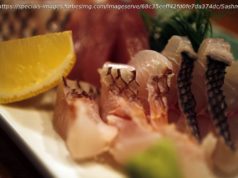 A thick forest thrives on hardened lava that once flowed down Mount Fuji’s northwestern flank into lakes that reflect the volcano’s snow-capped cone like rippling mirrors. Within it, the roots of hemlock and cypress trees snake out over the ground through a blanket of moss, and trails lead to deep caverns filled with ice.
A thick forest thrives on hardened lava that once flowed down Mount Fuji’s northwestern flank into lakes that reflect the volcano’s snow-capped cone like rippling mirrors. Within it, the roots of hemlock and cypress trees snake out over the ground through a blanket of moss, and trails lead to deep caverns filled with ice.
The Aokigahara forest , as this tangle of woods is called, was born on 12 square miles of lava from an eruption in the year 864, the biggest in 3,500 years. The event left Japan’s rulers awe-struck and its countrymen inspired to worship the volcano as a god. A walk into this isolated place, where nature’s power to rebound from cataclysm is so clearly on display, can be intensely spiritual.
Perhaps because of that, the woods inspire an almost reverential fear in Japan and, increasingly, beyond it. In the past year alone, three North American movies have opened with plots based on the woods’ reputation as a suicide destination and warren of paranormal activity: “The Sea of Trees” with Matthew McConaughey, “The Forest” and “The People Garden.” Those films come six years after “ Suicide Forest ,” a Vice documentary that has gotten more than 15 million views on YouTube and has furthered the idea that the forest is a place where people end their lives.
I decided I would hike from Lake Shoji, the smallest of Fuji’s five lakes, for about six miles to the site of the eruption that created Aokigahara. But first, I hired a guide to take my wife and me to an area on the forest’s western edge that is popular with tourists.
A train painted with Mount Fuji cartoons took us on the last leg of the two-hour trip from Tokyo to Kawaguchiko Station on a drizzly Friday last spring. From the station, a gateway to Fuji and its lakes, we rode a bus for 30 minutes to the Fugaku Wind Cave parking lot.
Takaaki Abe waited for us at the trailhead in a baseball cap and hiking boots. He told us he was 65 and had guided in the forest for 15 years, which made me feel better about paying 12,000 yen (about $103) to a company called Fuji Kanko Kogyo for a two-hour nature walk and visit to two caves.
Mr. Abe pointed his trekking pole into the forest as we started on the trail, which was crowded with families and children. The moss covering the trees retained water, allowing them to thrive without traditional soil. The ground we stood on certainly was anything but: In some places, the lava is more than 440 feet deep. There were holes, caused by violent emissions of steam, lurking in spaces between the hinoki trees, or Japanese cypress, and goyo matsu, or five-needle pines.
At the cave, we descended stairs into a broad hole that funneled into a cavern. Backlit ice pillars glowed in hues of translucent purple, and placards said the cave was once used to refrigerate seeds and silkworm cocoons. As we left, crouching and ducking our heads, Mr. Abe clapped his hands. Tiny holes in the lava absorbed the sound. “If you yell for help, nobody will hear you,” he said.
That comment prompted me to ask Mr. Abe if he had ever seen a ghost.
“No,” he said with a chuckle. “But I want to.”
I wanted to learn more about the forest, so on Wednesday I took a bus from my wife’s hometown, Kofu, about 17 miles north of Aokigahara, to the Fujisan Museum in Fujiyoshida. Headphones told me in English that after the Jogan eruption, the one that created Aokigahara, Japan’s imperial court thought it had divined the cause. The court determined that “Shinto priests’ negligence in performing religious rights” had angered the volcano, and it ordered provinces nearest Mount Fuji to increase worship of the volcano’s deity, Asama no Okami.
“It was the biggest eruption on record, so it had the biggest impact on people,” Takeru Shinohara, the museum’s curator, told me. Construction of the Kawaguchi Asama Shrine northeast of the volcano, a site now part of Fuji’s Unesco World Heritage designation, started in 865. Today there are more than 1,000 such sacred places, known as Asama or Sengen shrines.
I told Mr. Shinohara that I planned to hike through the forest on the route starting at Lake Shoji. He said most tourists didn’t know about the path, which is part of the Fuji-Hakone-Izu National Park, because few traveled beyond the more developed banks of Lake Kawaguchi and Lake Sai.
“It’s become a forgotten trail over time,” he said.
Two days later I was on a bus from Kawaguchiko Station to the Akaike stop at Lake Shoji. I crossed Route 139 and found the trailhead on a dead-end road behind a fire station, then followed the paved path onto the lava.
Take just one step into Aokigahara alone and you will understand how it got its reputation. Once-molten terrain swells and dips into the distance like a petrified ocean. Vines dangle from trees and moss partially hides deep crevasses. Sadly, there is also evidence that it is a suicide forest: I saw shiny blister packs that once held pills scattered amid the leaves, and fluorescent ribbons tied to trees by either thrill seekers or people who never returned. The Vice documentary followed these ribbons to locate human remains.
I came upon a guided group at a junction after only a few minutes.
“Whoa, are you alone?” one of the men asked me in English. “Don’t get lost.”
I told him not to worry, but I could understand his warning. The lava’s mineral content has a reputation for making navigational devices go haywire, and the forest looks the same in all directions. I had reached out to two Japanese geologists, Masato Koyama at Shizuoka University and Akira Takada of the Geological Survey of Japan, who said that holding a compass to the lava could move the needle, but that the device should work properly when held higher. My compasses worked fine, as did my hand-held GPS device.
I didn’t see anyone for the next hour, until the trail crossed a road and a man wearing a helmet and kneepads stood by a red scooter. He said his name was Yoshihide Yamazaki, he was 50 and he had come from Tokyo.
“My hobby is taking pictures of insects,” Mr. Yamazaki said. He held out laminated business cards with bug photos on them, and I took one. He said he came to Aokigahara to photograph the kamikiri mushi, or long-horned beetle.
I asked if he became scared wandering by himself.
“It’s dangerous if you go off the trail,” he said, holding up a plastic bag and an elastic band he wrapped around trees to avoid losing his way. “You can get lost very quickly.”
I asked if he had ever seen a ghost. He shook his head and said, “I wouldn’t mind seeing a good ghost.






